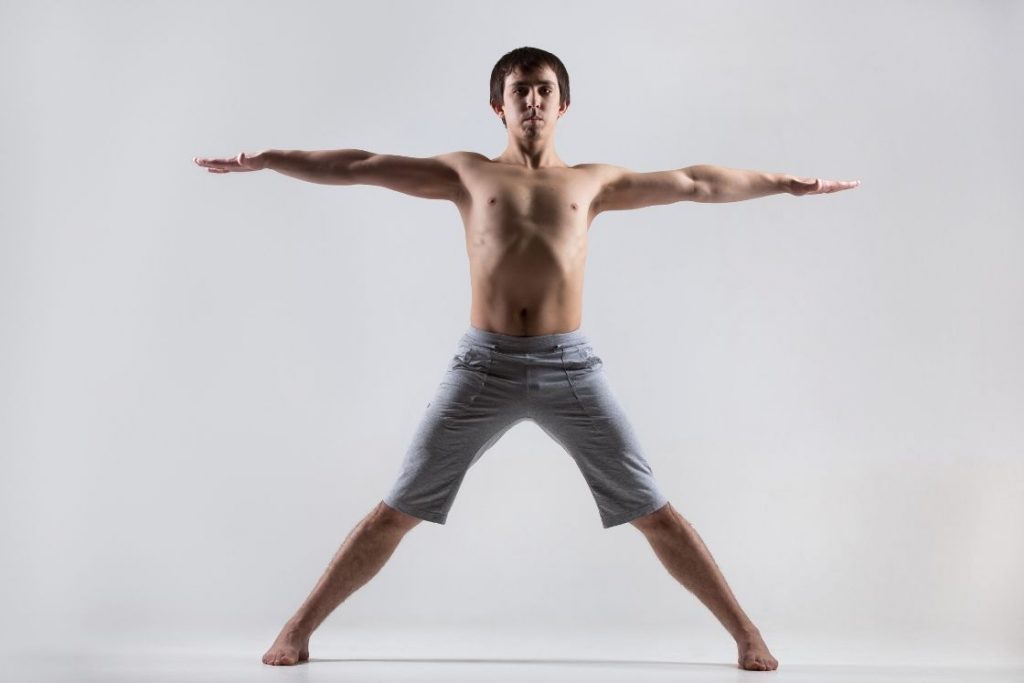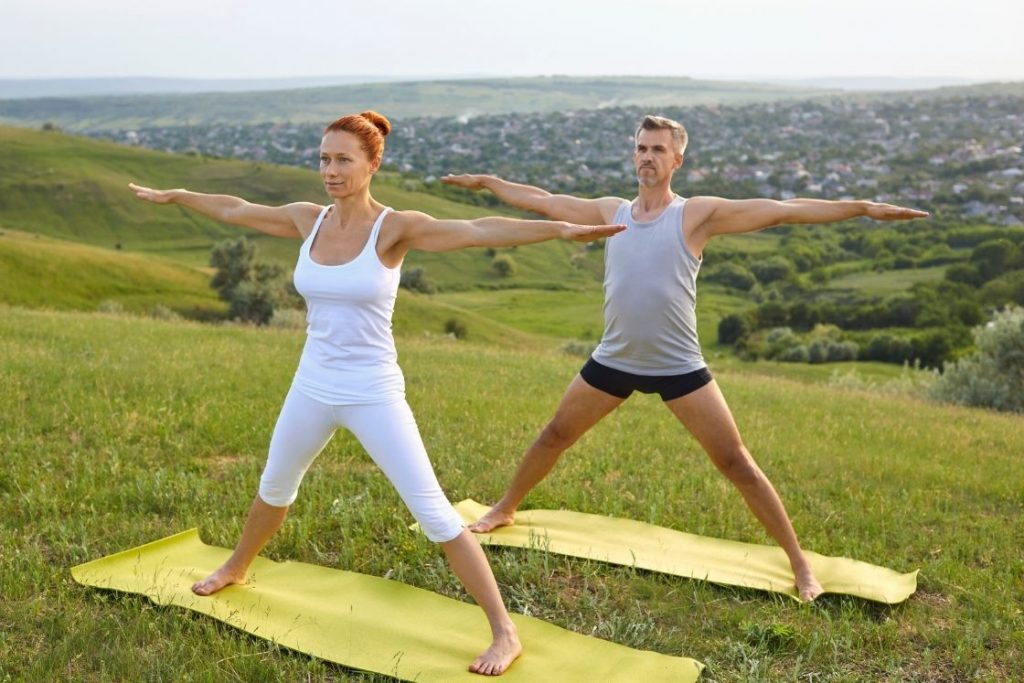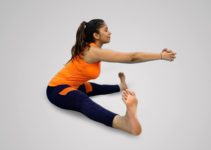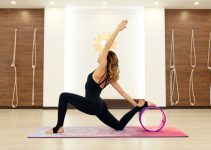
Among the easiest poses of Yoga, the Five-pointed Star pose makes a cut quite easily. It is an active pose that invigorates and energizes the body and improves posture. It is also used as a starting or transition pose for many yoga asanas such as Goddess Pose, Warrior II Pose, Triangle pose, etc.
Utthita Tadasana is also a great chest opener and aids in spine lengthening as well. The open stance, with hands and legs spread to the sides in this pose, invites happiness and joy in life and makes you feel powerful.
Additionally, it strengthens your body and provides flexibility by toning the leg muscles, elongating the spine, and opening the hips.
Meaning of Utthita Tadasana
Five-Pointed Star Pose is called Utthita Tadasana in Sanskrit. Here ‘utthita’ means ‘stretched’, ‘tada‘ means ‘mountain’, and ‘asana’ means ‘pose or posture’. Hence, in its literal sense, it means a stretched version of the Mountain pose.
But why is it called the Five-pointed Star? This is because the spread arms and legs along with the head make up the five points of a star in utthita tadasana. It is one of the simplest poses to boost energy and enhance the flow of prana in your body.
Utthita Tadasana is known for its grounding abilities that focus on the Root Chakra. The pose also stimulates your Heart Chakra by opening your chest and Sacral Chakra as you will tuck in your navel for a straight spine.
Practice Guide of Five-Pointed Star Pose
Follow the below practice guide to perform this pose.
Contraindications
There are very few contraindications being a beginner pose. However, below are some scenarios, especially if you are holding this pose for a longer duration.
Avoid practising five-pointed star pose or do it in moderation;
- People suffering from severe arthritis and migraine should avoid performing this pose.
- In case of injury or surgery in the hips, ankle, and shoulders it is better to avoid this pose until you have recovered. A long hold of this pose may cause stiffness and pain.
- If you are doing this pose as a vinyasa, people with symptoms of high blood pressure should take precautions.
Preparatory Poses
How to Do Five-Pointed Star Pose

Follow the below step-by-step instructions to perform this pose;
- Start by standing in the Mountain Pose (Tadasana).
- Spread your legs 3-4 feet apart with your toes pointing forward. Stand in a way that your weight is spread on all corners of your feet and firmly rooted to he ground.
- Raise your arms to the side at shoulder height with palms facing up, down, or forward. Stretch out your fingers as if you want to touch the walls.
- Keep your shoulders down, shoulder blade pressed back slightly and chest open. Tuck your tailbone to avoid arching of your back.
- Extend the crown of the head towards the sky while taking a deep inhale. Keep your head straight with your chin parallel to the ground and eyes to the front.
- In the next inhale, take deep belly breathe and imagine your legs, arms and head stretching. Take up as much space as you can.
- Stay in this pose for 30 seconds while keeping a stable breath. You can gradually increase the time with regular practice.
- To come out of the pose, slowly bring your arms down and come back to Tadasana.
Beginners tips
- Do not lock your knees it will put a strain on them. Keep a micro-bend for flexibility and ease in the pose.
- Keep your shoulders relaxed, which will automatically keep them away from your ears.
- Your ears, shoulders and hips should be in line. It will help in correcting your posture.
- To avoid getting distracted, choose a focal point directly in front of you. Be aware of your breath and keep it stable.
- For a deeper heart opening experience, broaden your collarbones.
- Keep your pelvis neutral in order to get a straight spine.
Variations and Modifications
- You can adjust the width between your legs. A more wider stance will give a nice stretch to the inner thighs. You can start by having a shorter width to work on your balance.
- Due to any reason, if you are unable to maintain a balance, use the support of the wall. Except your head, your buttockes, shoulders, and heels should be touching the wall.
- If you have stiff shoulders or any other medical issue, keep your hands on the hips. To increase the chest opening, turn your palms towards the sky.
- To challenge yourself, you can balance on the balls of your feet. Another advanced level is to balance on one leg. Tilt to one side and bring up your opposite leg off the ground by a few inches.
Follow up poses
- Warrior II (Virabhadrasana II)
- Reverse Warrior Pose (Viparita Virabhadrasana)
- Triangle Pose (Trikonasana)
- Goddess Pose (Utkata Konasana)
- Standing Wide Angles Forward Bend (Prasarita Padottanasana)
- Standing Yoga Mudra (Dandayamana Mudrasana)
Benefits of Five-Pointed Star Pose
- This pose is one of the best way to fix your posture by realigning your spine.
- It gives a good stretch to the entire body by engaging all the muscles and joints.
- Encourages you to receive joy, love and happiness by opening your chest and heart.
- Strengthens your balls and heels of your feet, ankles, legs, sacrum, abdomen, shoulders, and back.
- By extending your body in all direction, you are helping in improving blood and oxygen circulation throughout the body.
- As you are stimulating your crown, it relieves you of stress.
- When holding the pose for longer duration, you need to be aware of your breathing. It will improve your focus and concentration levels.
Conclusion
The Five-pointed Star Pose is one of the foundational poses of yoga. You also perform this pose when transitioning between poses. As you are extending yourself in all 5 directions, it gives a good stretch to the body, improves flexibility and instils you with positive energy.
It is also helpful in increasing the flow of prana energy to the entire body. This will help you with other yoga poses as well and maintaining mind-body harmony.
You can perform this pose whenever you need positivity, happiness, and joy in your life!




